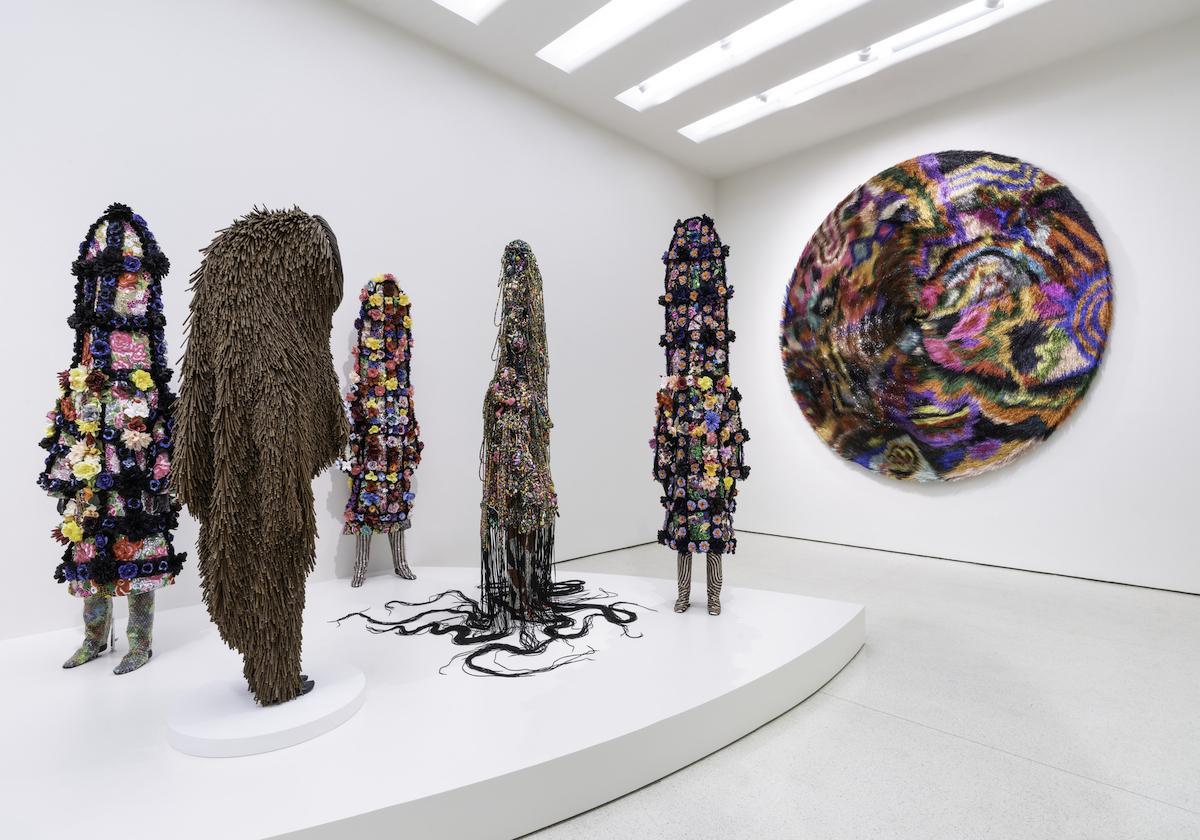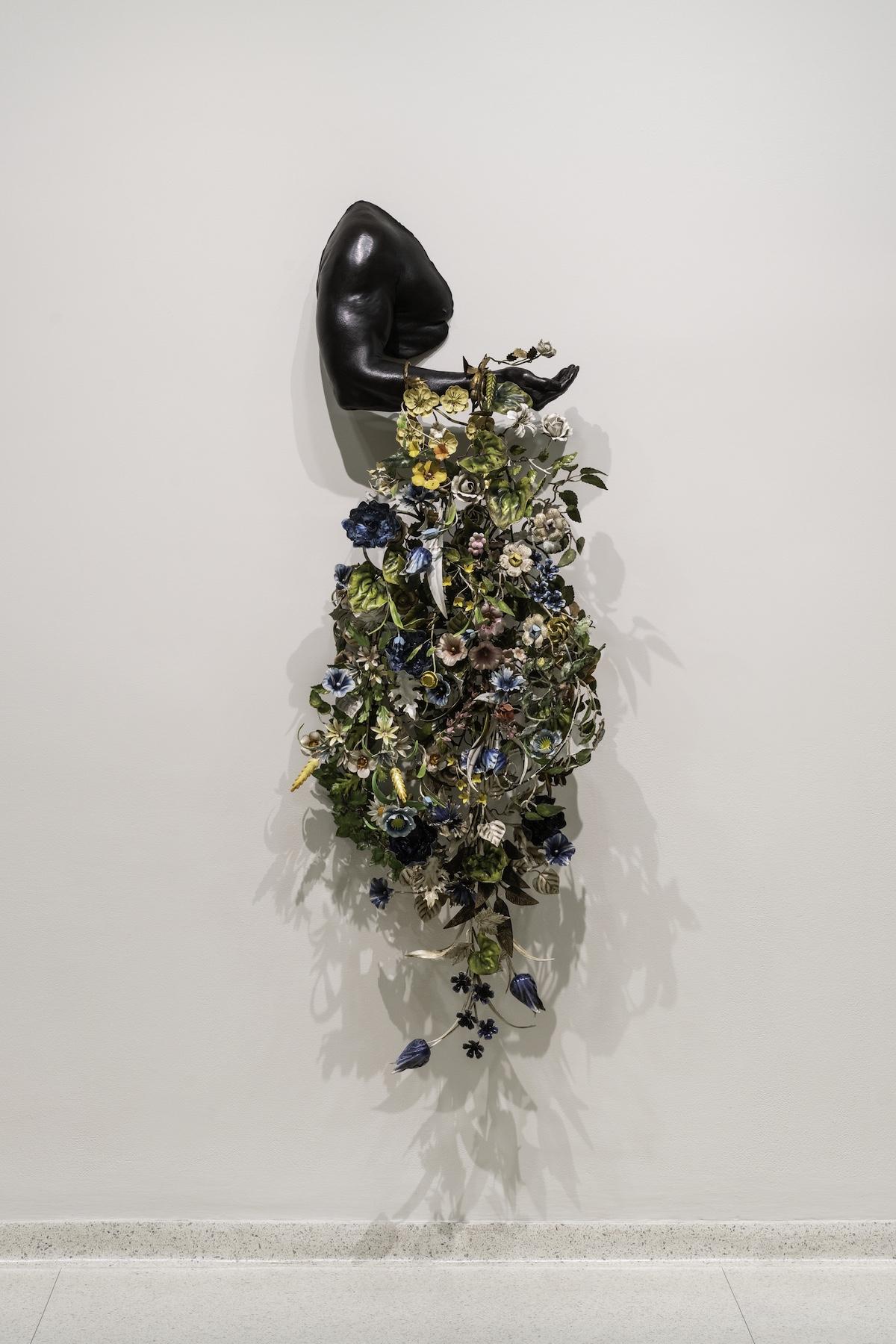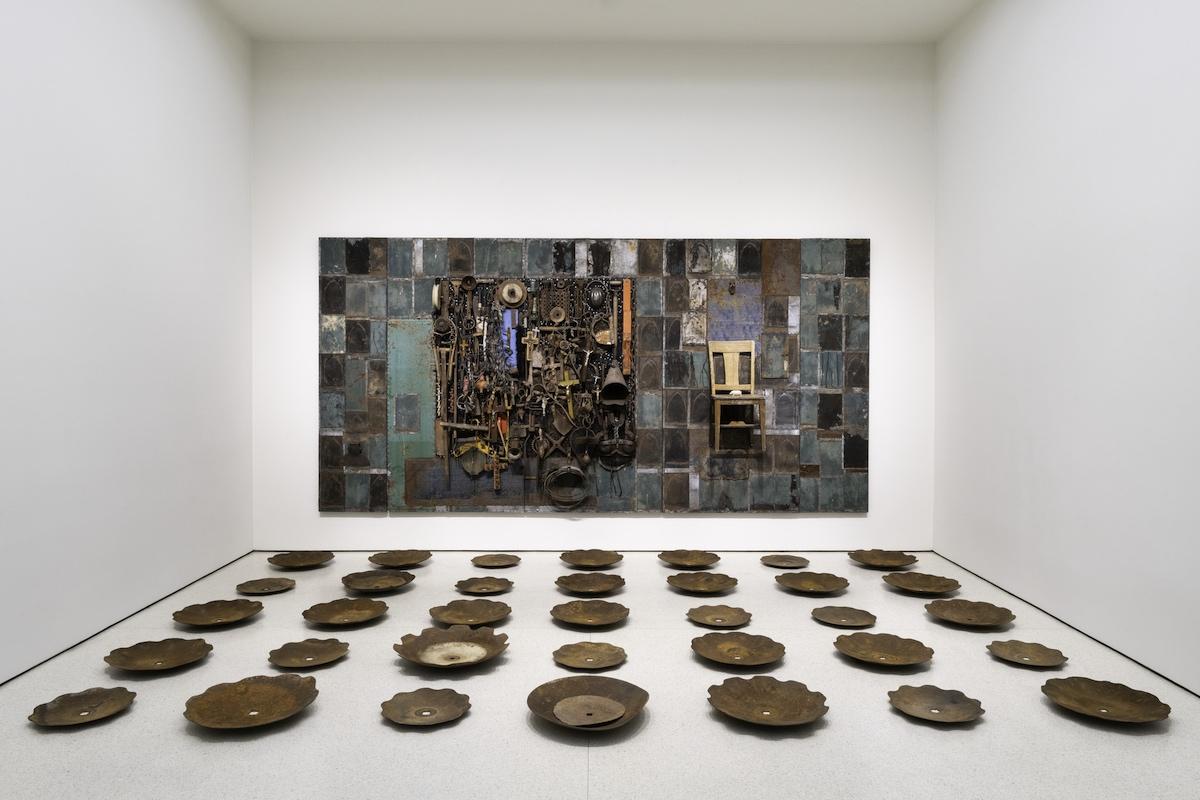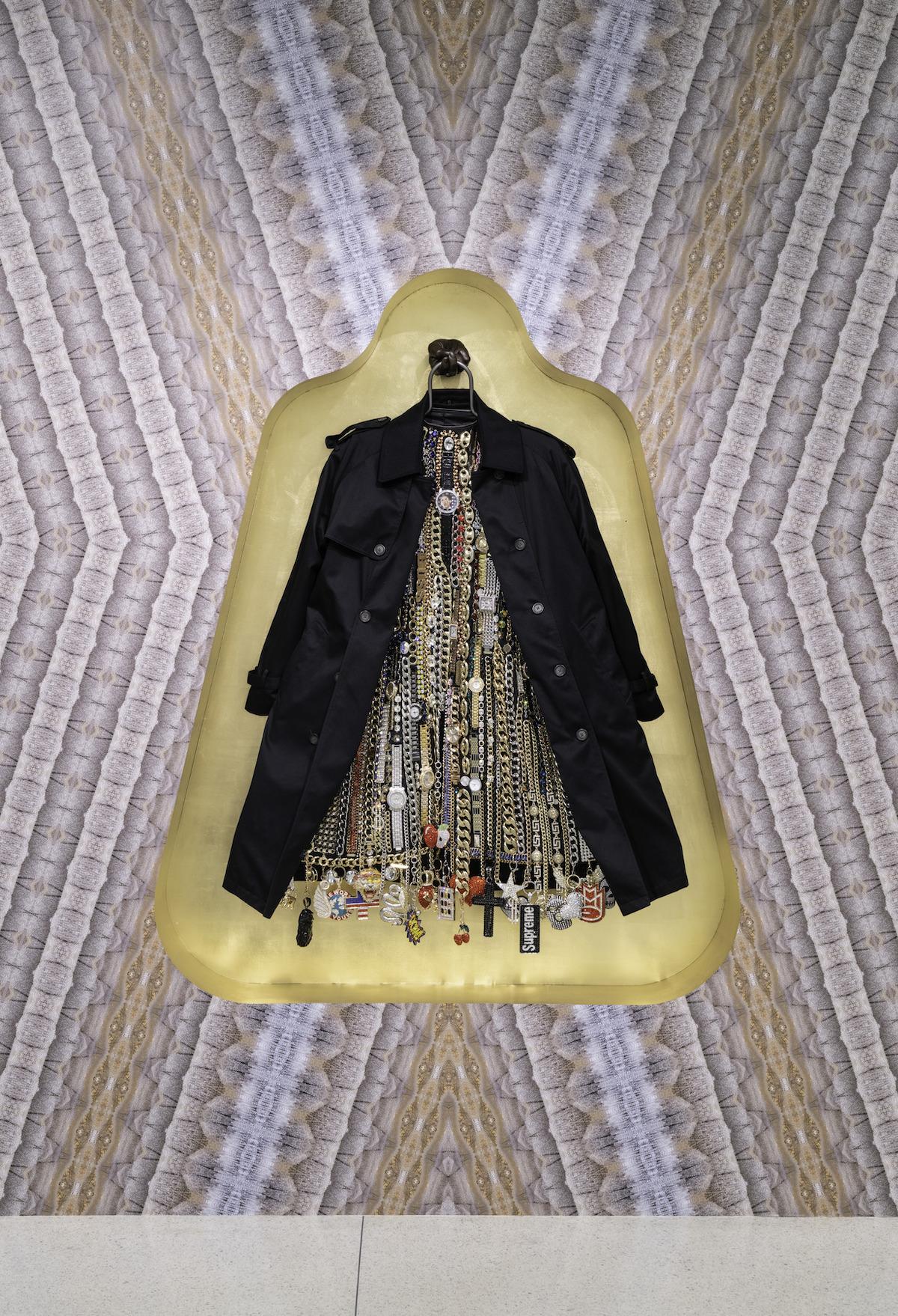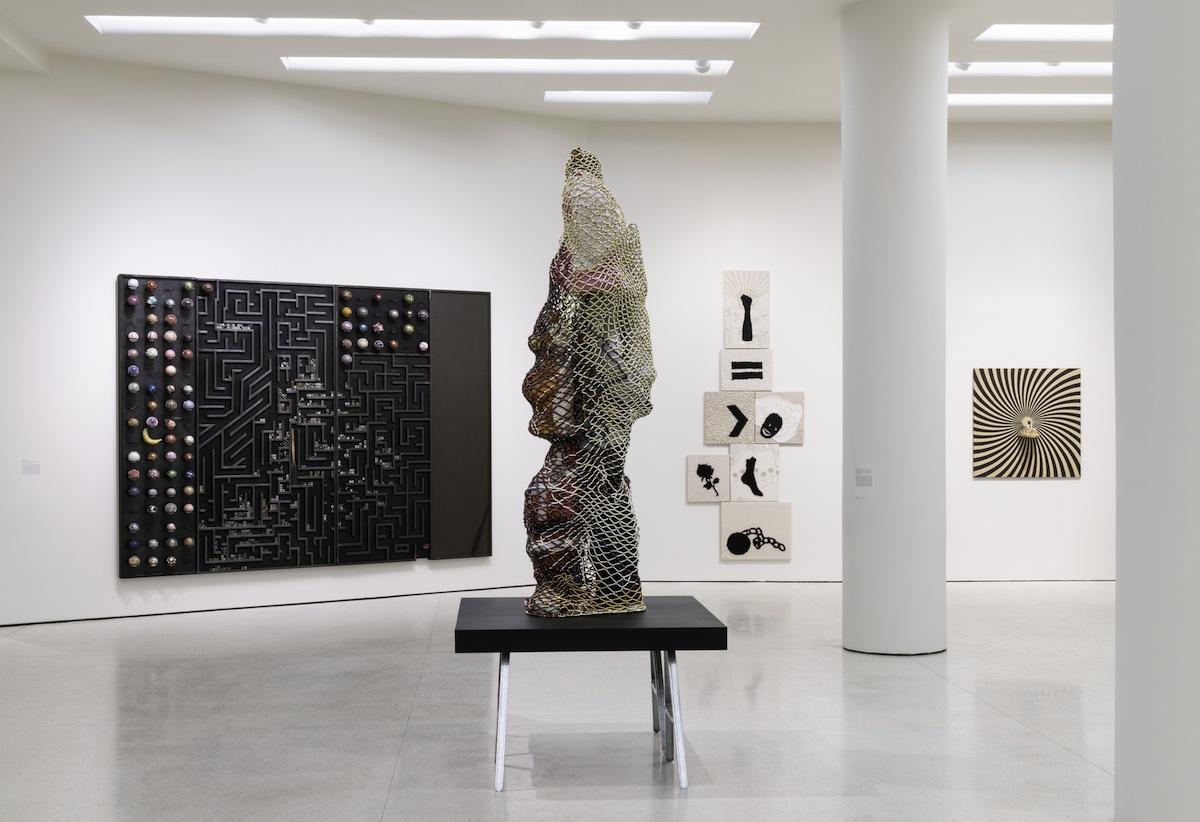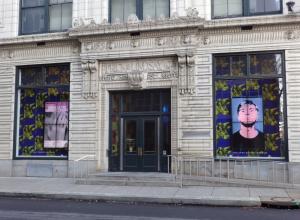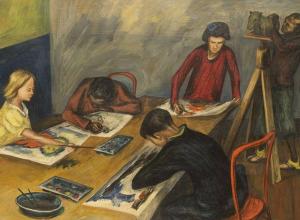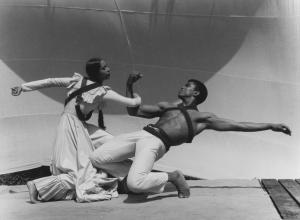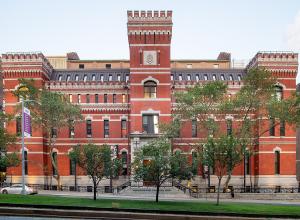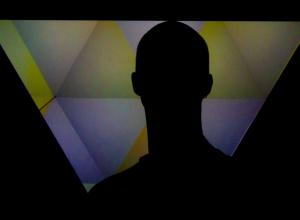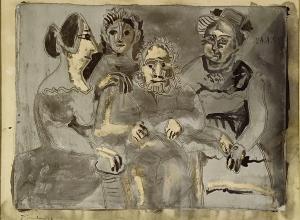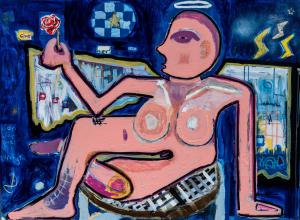Originally mounted at the Museum of Contemporary Art Chicago, the exhibition is spread throughout the Guggenheim’s tower galleries. It’s divided into sections titled “What It Was,” “What It Is,” and “What It Shall Be,” reflecting the themes that have informed Cave’s career. The show itself is called Forothermore with “other” being the operative word, since Cave is both Black and queer, a combination that can spell double trouble in America.
Emerging in the late 1990s, Cave was influenced by music, especially the Afro-psychedelic sound and outré stage spectacles of George Clinton and his legendary funk ensemble, Parliament-Funkadelic, as well as the thrumming beats and Dionysian atmosphere of dance clubs. He also found inspiration in the Bauhaus’s ethos of blending art, design, and theater. Indeed, the echoes of Oskar Schlemmer’s costumes for Triadic Ballet (1922) resonate noticeably in Cave’s signature “Sound Suits,” which serve as both standalone pieces and performance attire.




